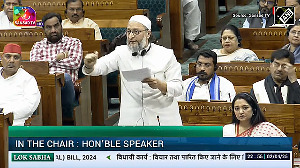Not too long ago, the Securities and Exchange Board of India ruled that investors could avoid paying the entry load charged while investing in mutual funds; all investors had to do was make investments directly with the asset management company.
In other words, investors were required to bypass the agent/distributor. As a result, the entire amount contributed by the investor would be invested i.e. no deductions would be made towards the entry load, which is generally utilised by AMCs for compensating distributors.
While the distributor community frowned (expectedly so), investors had every reason to rejoice. For far too long, several agents/distributors have failed to act in their clients' best interests and yet been handsomely rewarded for the same. Finally, investors were handed the power to make the most of their investments and in the process, also penalise agents/distributors of the aforementioned variety.
Close-ended funds and initial issue expenses
Now SEBI has come up with a regulation that scraps initial issue expenses (and amortisation thereof) on close-ended funds. This is yet another move aimed at reducing expenses on funds and thereby aiding the investor's cause.
A brief history of close-ended funds and initial issue expenses is in order here. Initial issue expenses are typically used to meet the sales, marketing and distribution expenses incurred at the new fund offer stage.
In April 2006, SEBI decided that only close-ended funds would be permitted to charge initial issue expenses. Furthermore, the same could be amortised (read charged to the fund in a staggered manner) over the fund's tenure. As a trade-off, close-ended funds were not permitted to charge entry loads. Hence an AMC could launch a close-ended fund and charge initial issue expenses (generally 6 per cent) to the same.
Conversely, open-ended funds were prohibited from charging any initial issue expenses. It was mandated that they would meet their sales, marketing and distribution expenses only from the entry load (generally 2.25 per cent).
Now it isn't difficult to guess why AMCs took a liking for close-ended funds. As a result, we had a slew of close-ended NFOs; almost overnight open-ended funds became passe. Clearly, AMCs were more concerned about having swanky launch parties and compensating distributors (using initial issue expenses) rather than taking care of investors' interests (i.e. keeping costs low).
However, the market regulator was not oblivious to this phenomenon. SEBI has now decided to scrap initial issue expenses (and amortisation thereof) on close-ended NFOs; instead, AMCs will have to meet all sales, marketing and distribution expenses from the entry load (which has been re-introduced).
Why investors will benefit
As a result of this regulation, expenses charged by AMCs to NFOs will be rationalised. And lower expenses translate into higher returns for investors. This is because a fund's net asset value is declared after charging expenses.
An example should help us better understand the same. Assume that a 3-Yr close-ended NFO mobilises Rs 1 bn (i.e. Rs 100 crores at the NFO stage); the AMC will charge initial issue expenses at 6 per cent (i.e. Rs 6 crores) and amortise the same over the fund's tenure. We shall assume for the sake of simplicity that the fund clocks a growth of 15 per cent every year and no redemptions are made. Finally, annual recurring expenses haven't been considered.
Expenses: Silent Killers
| Corpus mobilised at NFO stage (Rs crores) | 100 |
| Initial issue expenses (Rs crores) | 6 |
| Growth clocked in Year 1 (%) | 15 |
| Corpus at the end of Year 1 (Rs crores) | 115 |
| Initial issue expenses charged (Rs crores) | 2 |
| Effective corpus available to investors (Rs crores) | 113 |
| Growth clocked in Year 2 (%) | 15 |
| Corpus at the end of Year 2 (Rs crores) | 130 |
| Initial issue expenses charged (Rs crores) | 2 |
| Effective corpus available to investors (Rs crores) | 128 |
| Growth clocked in Year 3 (%) | 15 |
| Corpus at the end of Year 3 (Rs crores) | 147 |
| Initial issue expenses charged (Rs crores) | 2 |
| Effective corpus available to investors (Rs crores) | 145 |
| Effective growth for investors over a 3-Yr period (% CAGR) | 13 |
As can be seen in the table above, despite the fund having risen by 15 per cent CAGR over the 3-Yr period, investors have clocked a return of just 13 per cent CAGR. In other words, a investor who had invested Rs100,000 at the NFO stage ends up with Rs 144,290; conversely, he would have had maturity proceeds of Rs 152,087 had the initial issue expenses not been charged.
In the event of the fund failing to deliver, the impact on investors would be even harsher, given that the initial issue expenses (which are fixed in monetary terms) would now be charged on a lower asset base. For example, had the fund delivered growths of 15 per cent, 10 per cent and 8 per cent in years 1, 2 and 3 respectively, investors in the fund would have ended up with a growth of approximately 9 per cent CAGR over the 3-Yr period.
The scenario going forward
AMCs will now be forced to decide on which side they really stand. It's not like distributors can no longer enjoy the healthy commission earning that they have become accustomed to. It's just that AMCs will now have to dig deep into their own pockets for compensating distributors. They can no longer charge the funds (and in turn the investors) for the same.
It's quite interesting that AMCs have by and large chosen to be silent on the issue. The only quotes appearing in the media have been from mutual fund industry sources who have chosen not to reveal their identity; more importantly, the views have been on lines of how distributors will now be tempted to veer towards selling insurance policies rather than mutual funds. We were surprised that AMCs have chosen not to come out strongly in support of the move and give it a thumbs up!
At Personalfn, we believe that SEBI deserves accolades for having acted in investors' interests and championed their cause.
Well done SEBI!
Easy steps to tax planning. Get your free guide today! Click here!







 © 2025
© 2025